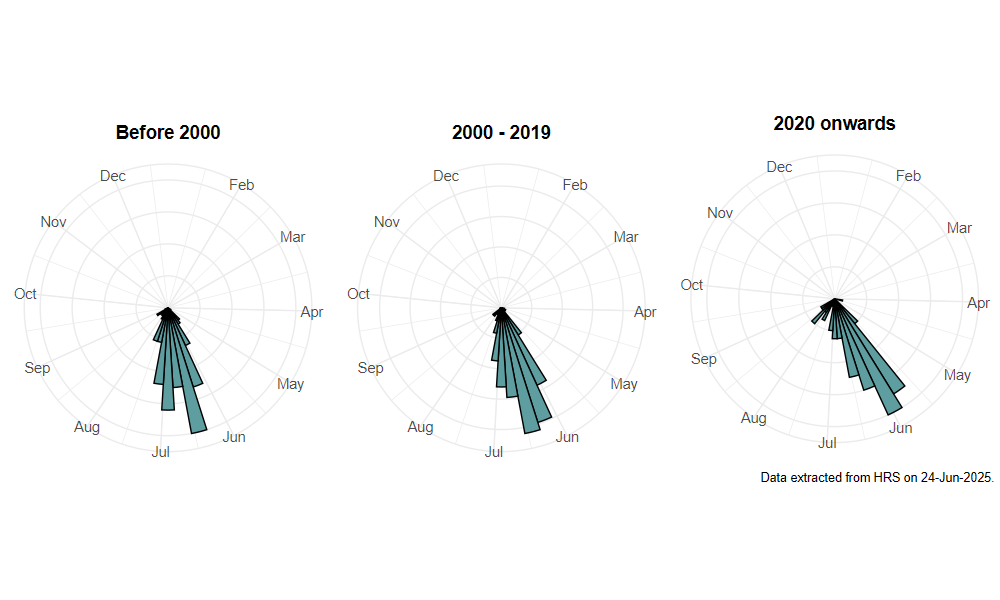Epistrophe diaphana (Zetterstedt, 1843)
Identification
Identification difficulty = 2. ![]()
![]() according to Ball & Morris, 20241
according to Ball & Morris, 20241
Synonymy
Syrphus diaphanus Zetterstedt in Coe(1953)2.
Biology
The larva is undescribed, but this genus is aphidophagous and associated with trees, shrubs and tall herbs. Adults usually occur at woodland edge or in scrubby habitats where they can be found visiting flowers, especially Hogweed Heracleum sphondylium or resting on sun-lit vegetation. Males hover at 2-4m in open patches.
Flight period
The following plots show the number of unique records per week that were not reported to be of eggs, larvae or pupae.

Status
Was listed as 'Notable' by Falk, 19913, but dropped from this status by Ball & Morris, 20144 who consider it LOWER RISK.
Distribution
This is a largely south eastern species that appears to have undergone a small but significant increase in range in the past ten years. There are recent records from Shropshire, Leicestershire and Northamptonshire and several localities are involved. New records from Nottinghamshire and Lincolnshireich suggest that this species is moving northwards.

Trends
The following plots show the Frescalo TFactor vs year and a map of the rescaled frequency (all records) for the species. For an explanation see here.

-
Ball, S., & Morris, R. (2024). Hoverflies of Britain and Ireland. WILDGuides (3rd ed.). Oxford: Princeton University Press. ↩
-
Coe, R. (1953). Diptera: Syrphidae. Handbooks for the Identification of British Insects, 10(1), 1–98. ↩
-
Falk, S. (1991). A review of the scarce and threatened flies of Great Britain. ( No. 39). Research and Survey in Nature Conservation (pp. 1–194). Peterborough: NCC. ↩
-
Ball, S., & Morris, R. (2014). A review of the scarce and threatened flies of Great Britain. Part 6: Syrphidae. ( No. 9). Species status (pp. 1–130). Peterborough: JNCC. ↩